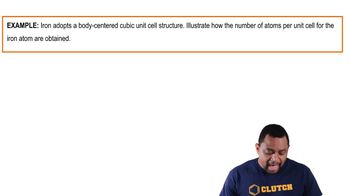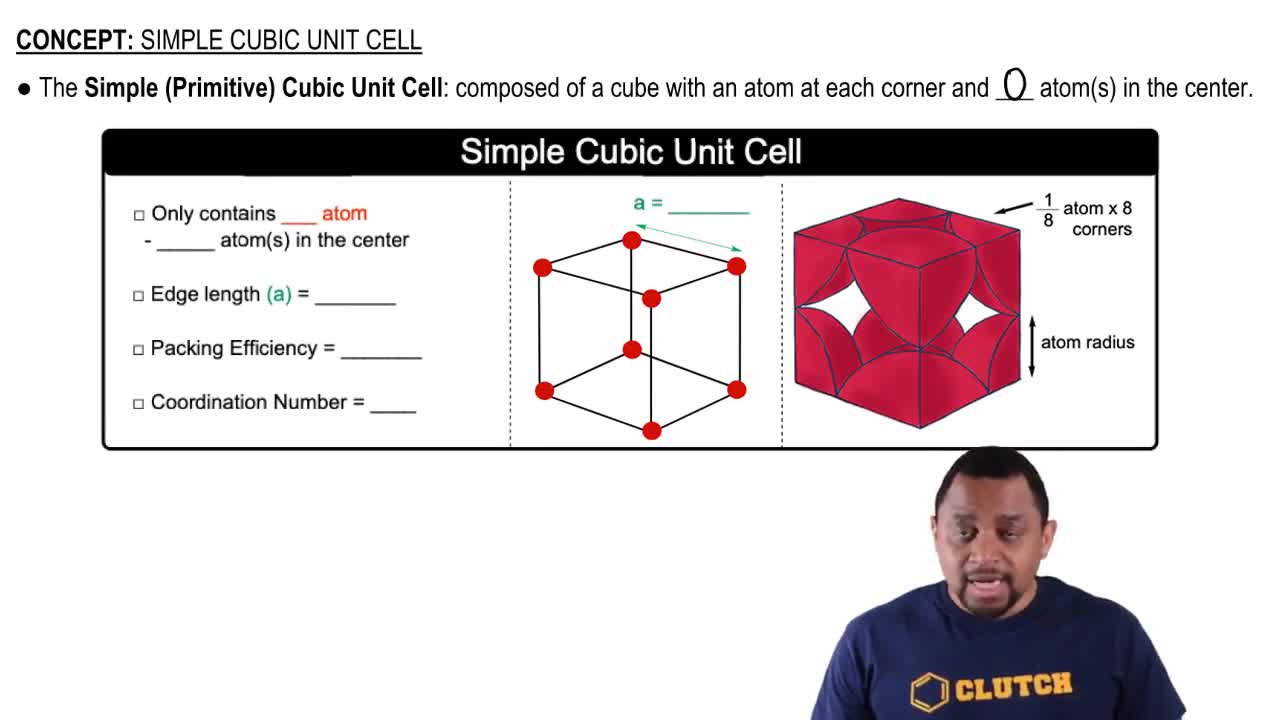Here are the essential concepts you must grasp in order to answer the question correctly.
Body-Centered Cubic (BCC) Structure
A body-centered cubic (BCC) structure is a type of crystal lattice where atoms are located at each corner of a cube and a single atom is positioned at the center of the cube. This arrangement results in a coordination number of 8, meaning each atom is in contact with eight neighboring atoms. Understanding this structure is essential for calculating properties like the unit cell diagonal.
Recommended video:
Body Centered Cubic Example
Unit Cell Diagonal
The unit cell diagonal in a cubic structure is the line segment that connects two opposite corners of the cube, passing through the center atom. For a BCC unit cell, the length of this diagonal can be calculated using the Pythagorean theorem, taking into account the edge length of the cube. This diagonal is crucial for determining the spatial arrangement of atoms within the unit cell.
Recommended video:
Pythagorean Theorem
The Pythagorean theorem is a fundamental principle in geometry that relates the lengths of the sides of a right triangle. It states that the square of the length of the hypotenuse is equal to the sum of the squares of the lengths of the other two sides. This theorem is applied in calculating the unit cell diagonal by treating the diagonal as the hypotenuse of a right triangle formed by the edges of the cube.
 Verified step by step guidance
Verified step by step guidance

